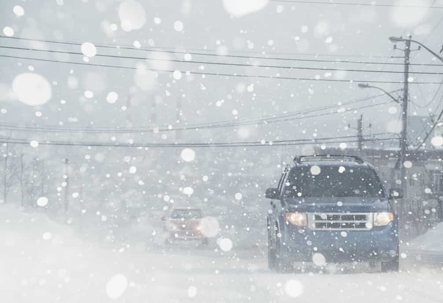You’re driving on a snowy Colorado road after a fresh winter storm. The snowpack glistens under your headlights, and despite your careful driving, the unmistakable slickness of black ice sends your heart racing as your tires momentarily struggle for traction. For many Colorado drivers, this scene is all too familiar. Winter’s beauty often comes with dangerous road conditions that lead to countless accidents every year.
Snow and ice not only make driving challenging but can also complicate the aftermath of an accident. That's why the attorneys at Gaddis, Herd, Craw & Adams, P.C. are here to help. We’ll discuss why snowy road crashes are often more complex than they seem, share essential tips to reduce your risk behind the wheel, explain the steps to take if you’re involved in an accident, and show you how we can help you pursue justice and compensation.
Why Snowy Road Accidents Are Complex
Snowy road accidents often involve multiple factors that make navigating legal claims difficult without expert assistance.
For example:
- Negligent Driving – Speeding, tailgating, or failure to yield in snowy conditions can lead to collisions.
- Poor Road Maintenance - Unsalted or improperly plowed roads significantly increase the risk of accidents.
- Visibility Issues – Heavy snowfall or icy windshields can limit a driver’s ability to see road hazards or traffic signals.
- Vehicle Issues – Worn tires or inadequate snow equipment can contribute to losing control on icy roads.
At Gaddis, Herd, Craw & Adams, P.C., we have the knowledge and resources to investigate these contributing factors thoroughly. Our team will ensure all evidence is accounted for, from police reports to weather conditions and witness statements.
3 Safe Driving Tips for Snowy Roads
While crashes can sometimes be unavoidable, taking extra precautions can reduce your risk on snow-covered roads.
1. Drive According to Conditions
Adjust your speed depending on the weather, road visibility, and traction available. Even if the speed limit is higher, driving too fast on snowy roads reduces your ability to react in time to obstacles or sudden changes. Look for icy patches, especially on bridges, overpasses, or shaded areas. Slow down well before curves or intersections to maintain maximum vehicle control.
2. Carry Tire Chains
Always have snow chains in your car, even if your vehicle is equipped with all-wheel or four-wheel drive. Snow chains improve grip and reduce the chance of sliding on icy or compacted snow roads, especially during steep inclines or heavy snowfall. Familiarize yourself with properly installing them before driving in the winter so you're prepared in an emergency. Many mountain roads and high-altitude areas in winter require drivers to either have chains or appropriate snow tires.
3. Extend Stopping Distances
Snow and ice mean your vehicle requires much more distance to come to a complete stop. Leave at least double or even triple the normal space between you and the car in front of you to ensure enough reaction time. Start braking well before stop signs, traffic lights, and other vehicles, applying gentle, steady pressure to the brakes. Abrupt stops can cause skids, so ease into your deceleration, especially on downhill or icy stretches.
According to Engineering Explained, if you are traveling at a rate of 30 mph, it takes the following distances to stop your vehicle under various road conditions:
- 30 feet in dry conditions
- 43 feet in wet conditions
- 100 feet in snowy conditions
- 200 feet in icy conditions
In comparison, if you are traveling at a rate of 60 mph, it takes the following distances to stop your vehicle under various road conditions:
- 120 feet in dry conditions
- 172 feet in wet conditions
- 400 feet in snowy conditions
- 800 feet in icy conditions
Planning ahead and prioritizing safety can help reduce risks, but the unpredictable nature of winter weather means accidents can still occur.
What to Do After a Snowy Road Accident
If you’ve been involved in a snowy road accident, your first priority should be safety. Contact emergency services, document the accident, and seek medical attention even if you believe your injuries are minor. Once you’ve addressed immediate concerns, it’s time to consider your legal options.
At Gaddis, Herd, Craw & Adams, P.C., we’re experienced in advocating for crash victims. We understand the intricacies of proving negligence in challenging conditions like snow and ice, and our team will work closely with you to build a strong case. From negotiating with insurance companies to fighting for your rights in court, we’ll take care of the legal process so you can focus on recovery.
Take Action Today
You don’t have to face the aftermath of a snowy road accident alone. At Gaddis, Herd, Craw & Adams, P.C., we’re committed to helping you secure the compensation you need to move forward.
Contact our team at today to discuss the details of your case.

